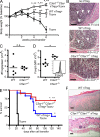Signaling through C5a receptor and C3a receptor diminishes function of murine natural regulatory T cells
- PMID: 23382542
- PMCID: PMC3570105
- DOI: 10.1084/jem.20121525
Signaling through C5a receptor and C3a receptor diminishes function of murine natural regulatory T cells
Abstract
Thymus-derived (natural) CD4(+) FoxP3(+) regulatory T cells (nT reg cells) are required for immune homeostasis and self-tolerance, but must be stringently controlled to permit expansion of protective immunity. Previous findings linking signals transmitted through T cell-expressed C5a receptor (C5aR) and C3a receptor (C3aR) to activation, differentiation, and expansion of conventional CD4(+)CD25(-) T cells (T conv cells), raised the possibility that C3aR/C5aR signaling on nT reg cells could physiologically modulate nT reg cell function and thereby further impact the induced strength of T cell immune responses. In this study, we demonstrate that nT reg cells express C3aR and C5aR, and that signaling through these receptors inhibits nT reg cell function. Genetic and pharmacological blockade of C3aR/C5aR signal transduction in nT reg cells augments in vitro and in vivo suppression, abrogates autoimmune colitis, and prolongs allogeneic skin graft survival. Mechanisms involve C3a/C5a-induced phosphorylation of AKT and, as a consequence, phosphorylation of the transcription factor Foxo1, which results in lowered nT reg cell Foxp3 expression. The documentation that C3a/C3aR and C5a/C5aR modulate nT reg cell function via controlling Foxp3 expression suggests targeting this pathway could be exploited to manipulate pathogenic or protective T cell responses.
Figures







References
Publication types
MeSH terms
Substances
Grants and funding
LinkOut - more resources
Full Text Sources
Other Literature Sources
Molecular Biology Databases
Research Materials
Miscellaneous

